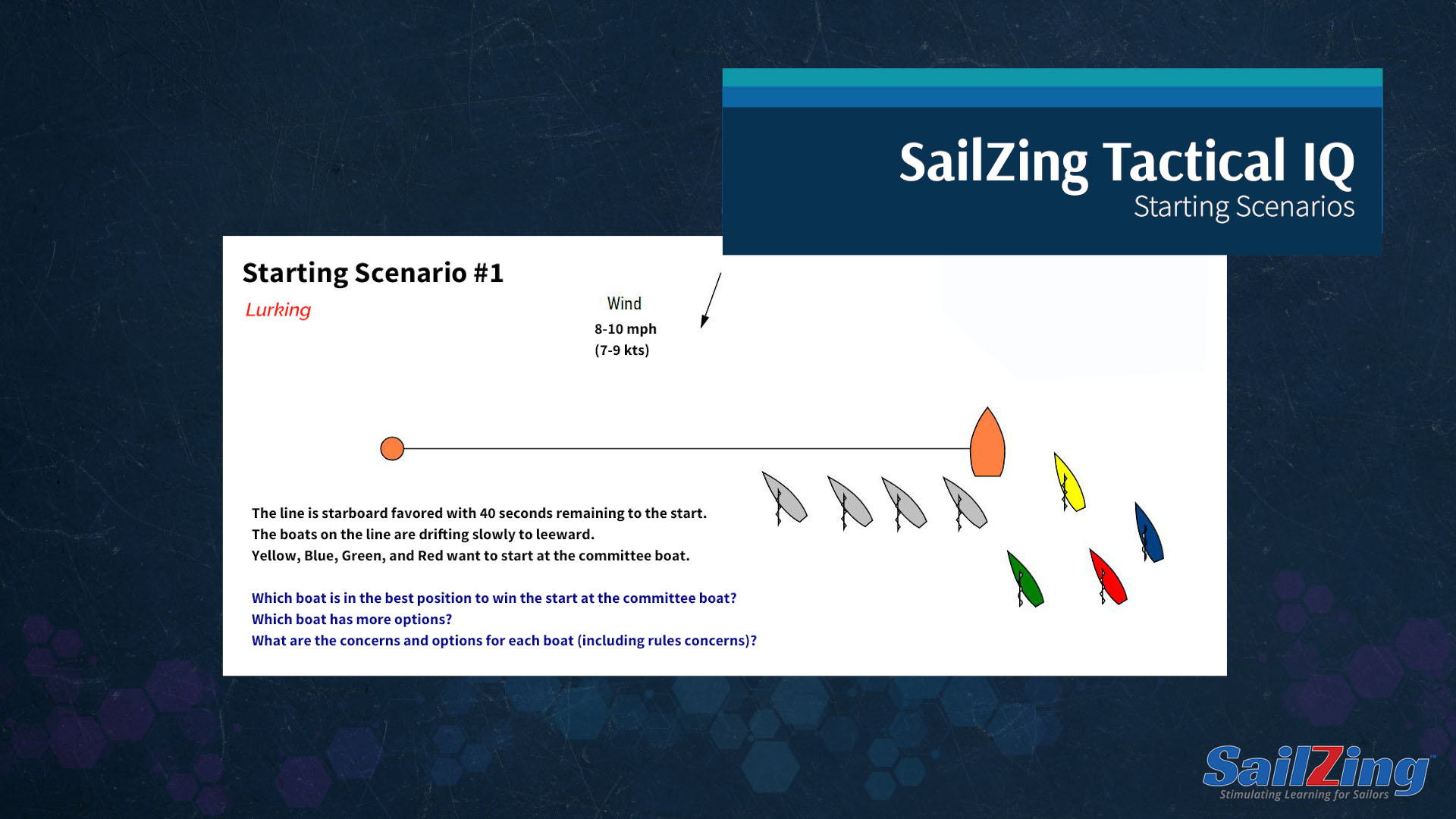Ever had your carefully planned approach ruined by last-minute wind shifts while starting? Wind shifts affect your time and distance to the line, your ability to get clear air, and your ability to defend against other boats. The quicker you can assess the situation and react, the better off you’ll be.
In this post, we discuss tips using an excerpt from the Roble / Shea ILYA Fast Forward seminars. Watch the two-minute video on wind shifts while starting or read the summary below.
Impact of a Left Shift
A left shift during the sequence makes it much harder to get to the line for two reasons:
- Longer distance to sail. See the diagrams below. A 15° left shift increases your sailing distance to the line by 40%. A 30° left shift almost triples your sailing distance to the line.
- Bad air. With boats headed off due to the shift, all but the furthest left boat will be lined up behind the boats ahead and in their bad air. This is true even if you are all equally close to the line.
- No ability to reach for speed. If the shift is big enough, bearing off to a reach to accelerate may not be an option.
- Boats too close to the pin won’t even be able to make the line on starboard tack.


Tips for a left shift:
- Set up closer to the line and start accelerating earlier.
- Consider tacking as soon as possible. Don’t be afraid to duck boats to get out into clear air. You won’t make gains in bad air following the boats ahead.
Impact of a Right Shift
By contrast, a right shift during the sequence makes it much easier to get to the line.
- Shorter distance to sail. A 15° right shift decreases your sailing distance to the line by 20%. A 30° right shift decreases it by 25%.
- Clear air. With boats pointed higher, the boats on the line are out of the backwind zone of boats to leeward.
- Defending. As a bonus, it’s easier to shut the door on boats looking to barge in at the committee boat.


Tips for a Right Shift
- Don’t accelerate too soon, since it will be easier than normal to get to the line.
- Consider setting up a little further from the line so you have room to accelerate to full speed.
Detecting Last Minute Shifts
With good observation skills, you may be able to pick out an oncoming shift before it gets to the starting area.
- In Starting: ILYA Fast Forward Seminar, Roble / Shea share their pre-start routine, which includes frequent wind direction checks, as well as looking up the lake for changes.
- Look for boats in other fleets that are sailing upwind.
- Look for boats in your fleet sailing upwind or doing practice starts before the sequence.
If you don’t see the shift coming, you should still recognize it when it happens:
- If you’re sailing behind the line looking for a spot, you may notice it by the sheeting angle needed to keep the boat moving or when you tack to starboard for your final approach.
- If you’re already at your chosen spot, with the boom sheeted out, you may see it from the telltales or the boom angle change when the shift occurs.
Starting Strategy and Tactics for Youth: ILYA Seminar – full session on starting for youth
Starting: ILYA Fast Forward Seminar – full session on starting for adults
Upwind Strategy and Tactics – Sail in Clear Air – more about bad air with a left shift
How to Recognize Pre-Start Wind Shifts – Sailing World




